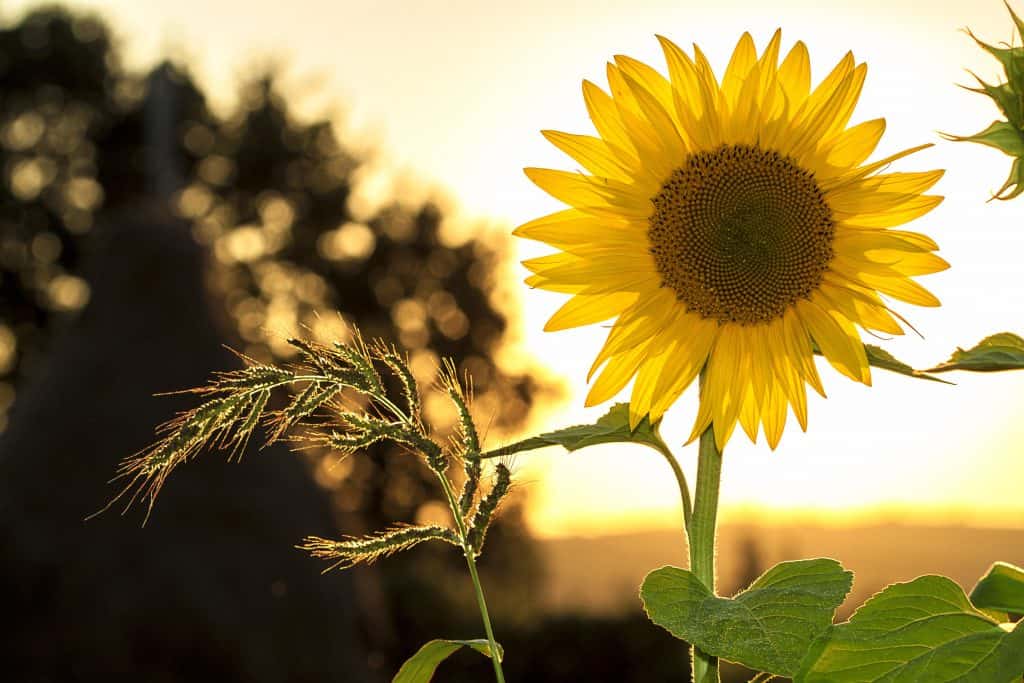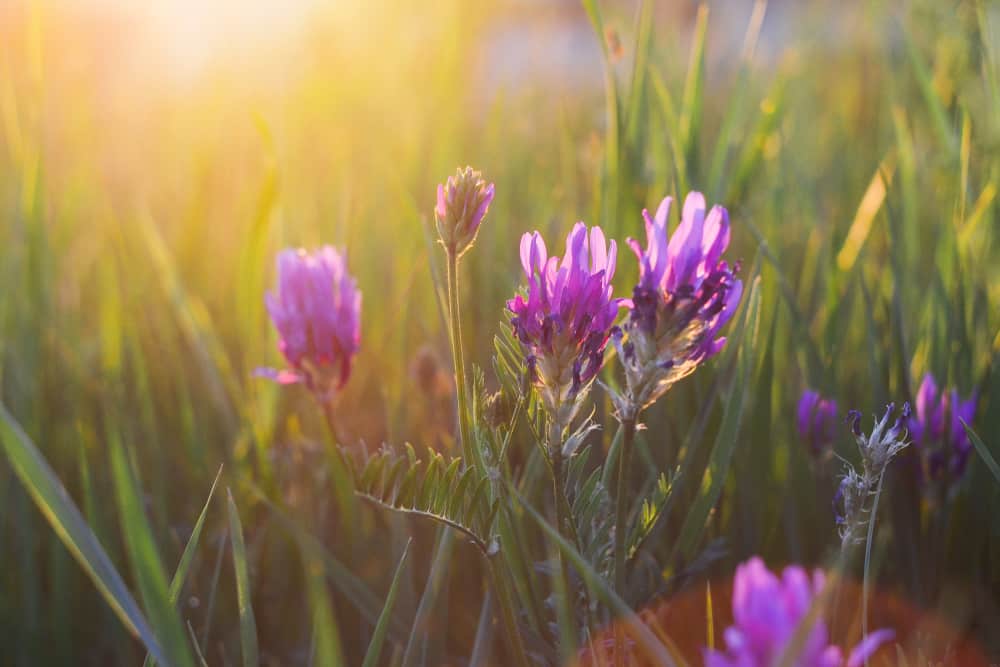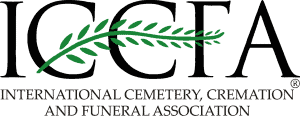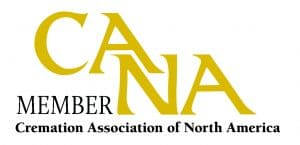Can you do your own post-death care and funeral arrangements?
In the simplest words, ‘yes’.
Before the 20th century, it was common for people or communities to take care of their own dead — both before and after death. Most people died at home, supported by friends, faith communities, or the local midwife (who often attended both births and deaths). Sometimes doctors attended the death in the home — but primarily to witness it and offer support.
Post-death care — washing and dressing the body — by the family members was considered a ‘last act of love and/or respect’. The community helped organize a time of ‘lying in honour’, final farewells, or wake, where friends would come to the home and offer their last blessings to the deceased and condolences to the family. A friend or family member usually made the coffin or shroud; others would dig the grave and then help fill it in after the coffin was lowered into it.
The parish clergy — who mostly likely knew the deceased and their family well — would do the traditional funeral service; but if that wasn’t appropriate or available, the family would create the service themselves. Tradespeople would often make the coffin and the gravestone; but other than that, most of the death care and arrangements were done by the family/community. Even in cities, where there was likely to be a local undertaker who would dig the grave and transport the body to it, the post-death care still happened in the home.
In fact, this approach to post-death care has only been lost for a few generations — many older people remember their grandmothers taking the equivalent of a ‘death midwife’ role in their family or community. Many non-Western, ethnic or religious traditions around the world have preserved this kind of post-death care to the present day — and it is also still maintained in many rural areas of North America.
Towards the end of the 20th century, people began to question the current funeral practices for several reasons — ecological concerns, expense, the loss of the ability to carry out the Death Journeyer’s expressed wishes, etc. In addition, without a hands-on approach, a significant part of the opportunity to process grief and other emotions is lost — although, in fact, the family may not be aware of that at the time. As a result, many people are considering other options — including those that are more family-directed, hands-on, personally meaningful, and usually less expensive — such as ‘home funerals’.
History of funeral homes and the costs of a standard funeral
Embalming was used during the U.S.A.’s Civil War, as a way to be able to transport soldiers’ bodies home to be buried; and it became even more popular after the Second World War for the same reasons. It eventually expanded into the commonplace practice that it is today. The skill of embalming required special training and certification and the necessary equipment and a place to house it. Especially in cities, it soon became more convenient to hand over post-death care/arrangements to a funeral director.
On one hand, there is a considerable legitimate expense in maintaining funeral-home premises, equipment, and a range of products, as well as an on-call funeral director (prepared to pick-up the body within an hour’s notice of death) — services which are usually included in the ‘basic arrangements’ fee. However, over time, embalming, ornate coffins, and various other ‘optional’ products were added and became status symbols. Eventually, the funeral industry expanded until the public came to assume that it was the only (legitimate and legal) option available.
As the industry grew, so did the range of secondary products and services that funeral homes offered — as well as the mark-up fees on them. Extra services — like arranging for flowers, filing the obituary, transporting the body and supplying limousines for the family, providing pallbearers, having mementos available for those who attended the ceremony, making arrangements with third parties (clergy, cemetery/crematorium, etc.) — may be included in the total fees; and it may not be acknowledged that they are additional costs until the family receives the final bill. In many cases, lower-priced options (such as low-cost coffins) are hidden, while only the higher-priced ones are in the viewing rooms; or inexpensive choices are not offered at all and only made available upon specific request — assuming that the family even knows that they exist.
Our culture’s ‘death taboo’ forbids us to speak about death at all, except in the most indirect and roundabout terms. This taboo, added to the status-symbol dynamic, means that it is often considered inappropriate (perhaps even undignified) to consider the cost of various funeral options. Both of these constraints result in a reluctance to question the necessity or the value of the options presented to us — it is essentially considered ill-mannered to do so.
Funeral homes tend to assert that all these options are integral parts of the overall status — although they are unlikely to actually use the word ‘status’, and instead imply that one can only truly honour their dead loved one by adding all of these services and products. Unfortunately, because of the cultural status-symbol effect, family members may also insist that the deceased deserves the most expensive option, to the point of shaming the decision-maker into that choice. Now a funeral can be one of the largest single purchases a family may make, outside of a house or car — generally ranging from $2,000 to $10,000. [Note: cemetery and cremation expenses are not usually included in the initial estimation of costs.]

As a result of both the expense and pressure to buy options, many people are now opting for less expensive funeral homes which specialize in ‘direct cremation’ — which is generally a quarter or a third of the cost of a medium-option burial. In this case, the body is removed from the home, hospital, or residential facility; stored in the funeral home’s morgue for the required 48 hours; and transported to the crematorium — without any visitation, funeral service, or other involvement by the family/friends. However, if these funeral homes also offer further services (such as visitation), the final costs may be close in price to those of the more conventional funeral homes.
Do I have to use a funeral director or a funeral home?
To our knowledge, there is no province or territory in Canada that legally requires embalming (unless a body is transported over a considerable distance), or even the use of a funeral home or director. In fact, many religious traditions (such as Jewish and Muslim) require that the body not be embalmed; and that family/community be directly involved in the post-death care and/or burial, with minimal intervention from a funeral home (if at all) — and these traditions have been honoured throughout Canadian history.
All the post-death care and arrangements can be done by the family and friends at home. Cooling the body to the required temperature is easily achieved by the use of dry ice or Techni-Ice gel packs (which need to be ordered in advance). Burial or cremation arrangements can be made directly with the cemetery or crematorium. All arrangements for visitation/final farewells, and funeral and/or memorial ceremonies, can be planned by the family/friends, with or without the leadership of clergy or spiritual advisors. All of the legal paperwork is available online from government sites and can be filed directly with your local Vital Statistics office — although special body-transport permits if required, are usually obtainable from Consumer Protection Agencies.
The value of ‘doing it yourself’ — (1) family-directed post-death care
Presently, if a funeral home is used, the body may be taken away as early as an hour after death. ‘Open coffin’ funerals are becoming less popular, and many funeral homes require that the body be embalmed for this type of funeral, and/or charge extra fees for them. Unless the family is willing to pay the extra cost of visitation, they — and those travelling from a distance for the funeral — will not see the body again, and have no opportunity to say their ‘final farewells’. As a result, there is no tangible evidence of the reality of the death; and even if visitation or an ‘open coffin’ is allowed, cosmetics will be used to make one’s loved one look like they’re ‘only sleeping’. As a result, the family and friends may be left in an emotional netherland, which can become a significant obstacle to moving through the healthy stages of bereavement. In the end, our cultural ‘death taboo’ is only reinforced.
The primary feature of the death taboo in our culture is in regards to handling the dead body — and yet many of us have held the hand of our loved ones or kissed their forehead shortly after they died. We are instilled with a fear that the body will significantly decompose immediately after death — which is not the case — and decomposition can be easily delayed by reducing the body temperature, using dry ice or Techni-Ice gel packs (to cool the body to the legal requirements) for the 2-4 days before the burial or cremation.

Post-death care (washing and dressing the body before rigor mortis sets in) is not significantly different from pre-death care, especially if we have been caring for our loved one throughout their final days — except that we no longer need to worry about hurting them. Doing post-death care is a time-honoured ‘gift of love and respect’ that has been maintained by ethnic and religious cultures across the world. For those who have been caregiving pre-death, it is a brief period of ‘extended caregiving’ — time to tend their loved one for one last time and gently transition out of the caregiver role. For those who live at a distance, or were not otherwise able to help with the pre-death support, it is an opportunity to participate in the last act of caregiving.
Keeping the body at home allows the family/friends to explore what ceremonies or customs would be most significant to them or their dead loved one, and to arrange for what is most personalized and meaningful to them, and do so in their own timing (i.e. without the restrictions of the funeral home’s rules or business hours). Such ceremonies/customs can also include children in appropriate ways, and allow them to come to their own terms with what death means — which are generally healthier and more inventive than we would have guessed.
Making the coffin or shroud, and/or decorating a standard cardboard coffin in a personalized manner, allows others to be involved in the post-death process — especially those who are not prepared to do physical care themselves, or who were unable to arrive in time. It is another variation of a ‘final gift’ and can provide an evocative means for both releasing grief and reconnecting with family/friends and something else which children can directly participate in.
It is quite possible for the family and friends to choose to “do it yourself”. [The CINDEA website provides detailed timelines and instructions for post-death care, as well as resources for paperwork and other support systems, for each province/territory — see Home Funerals.] However — whether the death was expected or not — this can be a very stressful time for the family and close friends, and it may be helpful to call in an alternative death-care practitioner to assist. CINDEA provides listings of alternative death-care practitioners who provide support services for either part or all of the pan-death process.
The value of ‘Doing it Yourself’ — (2) family-directed funeral or memorial ceremonies
In the past, by North American custom, the local parish clergy would lead the funeral service, according to the family’s religious tradition. Nowadays, fewer people belong to a faith community: and family members may follow very different religious/spiritual traditions and lifestyles from one another. In all likelihood, the funeral director also has no direct knowledge of the deceased, except what is conveyed by the family in a stressful and limited time period. Most of us have experienced a funeral service where the clergy or funeral director didn’t know the deceased, and/or was following a tradition that the deceased didn’t belong to and perhaps even disagreed with.
Direct cremation is becoming more and more popular — in part because it is the least expensive way to deal with the remains. However, it generally doesn’t allow for any direct family involvement — although it is sometimes acceptable for a family member to push the button (starting the cremation process), but usually only if they specifically ask to do so. Modern families may only have a memorial service, sometime later than the burial or cremation — often this is in the form of a ‘celebration of life’. While these services offer a large community of family, friends, and acquaintances the opportunity to honour ‘the life led’ by the Death Journeyer, they don’t provide the intimacy of both grief-sharing and the tangible honouring of the deceased that a service directly connected to the cremation or burial does.
A family-directed funeral service (either as part of the burial or cremation process or at a later time) allows the family to explore what is particularly meaningful to them. If the Death Journeyer is conscious and aware before death, they can be directly involved in choosing the most significant elements of the ceremony. Alternative death-care practitioners can be helpful in both the exploration of ideas and in weaving one or more ceremonies together that uniquely represent the most evocative and meaningful aspects of the Death Journeyer’s life and the grief felt at their loss. Green burials usually allow for the most family involvement — although arrangements can sometimes be made for family and friends to be directly part of a standard burial or cremation.
Memorial services — whether or not there was a funeral service directly connected to the burial or cremation — are often added at a later date to allow for a broader community to gather together and celebrate the life of the deceased. They are most often arranged by the family and led by a friend; and can be in a rented hall, a meadow, etc. — anywhere that fits the family’s needs, and/or that may be special to the Death Journeyer.

What help or advice is available for doing post-death care and funeral arrangements yourself?
CINDEA (Canadian Integrative Network for Death Education and Alternatives) maintains a website with all of the necessary information and resources (for each province/territory) to handle post-death care, arrangements, and the legal paperwork — without using a standard funeral home. The website also provides listings of Canadian alternative death-care practitioners who are able to support you through the pan-death process.
Although U.S.-based, both the National Home Funeral Alliance (NHFA) and the Funeral Consumers Alliance (FCA) support the rights of families to direct their own post-death care and funerals and have information on how to do so. The Natural End both also U.S. based — include Canadian alternative death-care practitioners.
What is a green burial or natural burial?
A green burial (or natural burial) refers to a burial where no artificial processes are employed. Natural products are used for the coffin or shroud; and the grave usually does not have a cement grave-liner (whose purpose is merely to maintain reasonably flat lawns that are easy to mow). Most often, green-burial sites are in woodlands, a conservation site, or lands being returned to a natural eco-system — places where no irrigation, pesticides or herbicides are used. A green/natural burial is more aligned with a natural life-cycle approach and is particularly appropriate for those who are ecologically-minded. It also tends to be somewhat less expensive than a standard burial.
Most people are used to a coffin being used for burial — which can be made from wood, wicker, or cardboard for a green burial; but shrouds are also often acceptable. Links to blueprints for wooden coffins, and full patterns/instructions for green-burial approved shrouds, are available on the CINDEA site — see Home Funerals. Headstones or grave markers are usually not allowed, as they interfere with the land returning to a natural ecosystem — although sometimes simple, natural flat stones may mark a gravesite, or names of the deceased may be etched into a naturally occurring rock face. Generally, modern surveying techniques are employed to record gravesites, making it possible to identify where each specific person is buried.
Depending on the particular green-burial site, the family may be allowed to lower the body into the grave and then fill it in entirely; and then plant indigenous vegetation or trees on the site in the appropriate season. Although cemetery workers will be present to safeguard the burial process, they are usually willing to stand aside — allowing the family to conduct their own funeral service with minimal interference.
There are only a small number of green burial sites available in Canada at the present time. Visit our Green Burial sites directory to find green burial cemeteries near you.
Cremation
Cremation is much less expensive than burial — generally about 1/5 of the cost of burial if it is a simple/direct cremation. The difference in cost is also influenced by the fact that many of the burial grounds in Canada are full; and there is no remaining land, within city limits, to establish a new one — hence burial costs are rising. Because of the lower cost, many Canadians assume that cremation is also the more ecological option — unfortunately, it is not. The pollution resulting from one cremation is 5 times that of burial and is estimated as equal to at least a 500-mile car journey (other sources suggest a trip across most of the breadth of Canada). Mercury from dental fillings is often dispersed into the air unless the crematorium has special filters to remove it.
Two options to cremation that are more ecologically friendly have been invented — Resomation (also called Bio-Cremation), which liquefies the body with an alkaline solution; and Promession, which freeze-dries the body. Unfortunately, these two options are not yet available in Canada, although Transition Science claims to have the license for the distribution of Resomation equipment in Canada. There are at least two active Resomation facilities in the U.S., and more in Britain, where the technology originated. In all cases — cremation, Resomation, and Promession — the bones still need to be pulverized before being given back to the family.

The carbon footprint of cremation is extended if a traditional coffin is used (hardwoods, and non-biodegradable materials) or if the body has been embalmed. Chipboard and cardboard coffins are both used for cremations, but the chipboard variation produces more toxic waste than cardboard ones. A range of recycled-cardboard coffins are now available — which, though they still produce some pollution, result in less than other options. Cardboard coffins are usually lined with material made from paper or cotton, which are bio-degradable; but one must ensure that other non-biodegradable products are not being used.
Legally, you have the right to buy any kind of coffin from any funeral home or supplier, and have it used by any other funeral home, cemetery, or crematorium. For a heavier body, the larger version of a cardboard coffin may need to be used — check the specifications of the manufacturer you choose.
The Scattering of Ashes
There are endless options to where ashes may be buried, or more often, scattered. In general, ashes can be scattered anywhere — except that in a park or private land, a permit or written permission must be obtained. If a sea-scattering is preferred, find out what the regulations state in your area — usually several nautical miles from the shore. Cremation ashes can also be buried in a green or conventional burial ground. A simple burial of ashes tends to be 1/3 to 1/4 of the cost of a standard body/coffin burial; but depending whether they are buried or placed in a mausoleum or vault, can be as expensive as a body/coffin burial.
Occasionally, the memorial service is directly connected to the spreading of ashes — either at the site of the spreading or just beforehand in a suitable hall; and friends may or may not be invited to also attend the spreading afterward. More often, one or more members of the family spread the ashes sometime before or after the memorial, in a more intimate ceremony that they have designed themselves. One option is to divide the ashes amongst family members and maintain them for a year; then share them in a family gathering, which acknowledges the first anniversary and tends to be a particularly difficult date in the grieving process. However, any option that is meaningful to the family can be chosen.
Conclusion
Many people are also concerned about the cost of their ‘end of life’ care. Some studies estimate that presently, for an average individual, their health (and/or long-term residential) care costs as much in the last year of their life, as in all of the rest of their lifetime. As such, and especially given the recent impact of recessions on health/complex care, they are concerned that there will not be enough funding for the health care that their children and grandchildren may require to live productive lives.
As well, there is a current phenomenon of adult children requiring the financial support of their aging parents (who are more likely to have significant pensions). Many elderly adults are also concerned that the cost of their death (especially a conventional funeral home, burial or cremation, coffin, etc.) will drain their bank accounts and life insurance policies, leaving little future support for their children and grandchildren.
As ‘baby boomers’ begin to address the issues of what they choose both at their ‘end of life’ and for their remains, and/or the ecological footprint of their death, it is likely that more and more of them will consider the non-conventional options above.

Pashta MaryMoon and Mia Shinbrot are co-directors of CINDEA (Canadian Integrative Network for Death Education and Alternatives), www.cindea.ca — which provides extensive information on the above options (‘home funerals’, Death Midwifery, etc.) and all the resources required for each province/territory. Pashta is also a Death Midwife in Victoria, B.C., with Journeying Beyond

